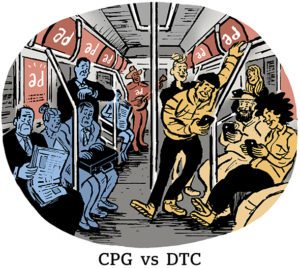Last year, the AdExchanger Commerce Media newsletter covered the reckoning coming for subscription software companies – especially those that serve retail and ecommerce brands.
SaaS vendors heard that message loud and clear, and they’re acting fast to reduce the number of subscription line items that brands have to pay.
SaaS subscription fatigue
It’s no wonder that ecommerce and retail brands are tired of the number of subscriptions they must carry.
An ecommerce merchant might have Shopify, Klaviyo and Yotpo for reviews, maybe a couple of analytics vendors like Triple Whale and Northbeam, plus LiveRamp, perhaps, and many others all wrapped around yet another SaaS platform like Snowflake.
But, the thing is, it can be hard to find fat to trim, because it’s not as if businesses dish out large monthly payments to vendors that don’t provide returns.
One strategy – and it’s what vendors prefer – is to reduce the total number of individual SaaS vendors clients pay directly without actually decreasing the overall budget.
Last week, customer data platform (CDP) BlueConic acquired data company Jebbit, which creates surveys, quizzes and other bits of engaging content that are used to collect data.
Salesforce and Adobe claim to aggregate all the services of a CDP as well as services from other SaaS categories, BlueConic CEO Cory Munchbach told AdExchanger. But those SaaS giants have only “cobbled together” solutions that often require additional services or even consulting contracts before customers can get started.
“Buyers can’t be beholden and slowed down by those kinds of systems,” she said, “so I think it’s going to resonate in market to bring these [tech products together] in different combinations.”
SaaSing back?
In other words, although brands are on a mission to decrease their SaaS rosters, there is still a huge market opportunity for independent mar tech. That’s because many businesses are still only just starting to shift from traditional IT to cloud computing, a huge potential unlock for SaaS vendors.
And the subscription tech platform giants like Oracle, Salesforce and Adobe aren’t exactly cornering the market, despite their size.
Oracle Advertising is kaput. That means Oracle offerings like Grapeshot, Moat, BlueKai and DataLogix – the one-time top seller of retail audience data for online advertising – are soon to be gone. And $300 million, which was how much revenue Oracle’s ad products generated during the company’s last fiscal year, is up for grabs.
Salesforce’s acquisition of Krux in 2016 is another example, albeit a less dramatic one. The popular early DMP lost its edge and many flagship clients, including Business Insider and Leaf Group, after the Salesforce acquisition. Within Salesforce, web publishers accustomed to blue chip status were hardly a blip on the enterprise radar.
There has also been a general wising-up among brands and regulators about SaaS “stickiness” (the term for how much of a hassle it would be to switch vendors). The FTC announced a case against Adobe last month over alleged deceptive subscription fees and cancellation practices.
“SaaS revenue growth is often just exploiting the burden of switching,” wrote Sean Frank, CEO of Ridge Wallet, in a post last year for his newsletter on DTC marketing. “They are not your friend.”
He says ecommerce brands should add only one more enterprise subscription: for OpenAI. Then use the chatbot prompts to develop software plugins that replace SaaS point solutions.
Head in the clouds
To combat this point of view, independent SaaS vendors can conglomerate together or, you know, simply prove their worth. But another popular tactic is to retreat into cloud infrastructure marketplaces, where what once may have been a dozen different subscription fees can hide under one large Snowflake or AWS bill.
NCSolutions, one of the top shopper marketing data solutions, revamped its go-to-market model last year. The new goal is not to be a separate data source or to ship and export data between platforms. Instead, the plan is to be a native app built on Snowflake, AWS and other clouds, so that advertisers can say their data never leaves the system.
In that same vein, Experian, Neustar and LiveRamp are pilot partners for AWS marketing cloud products, including Data Clean Rooms and Entity Resolution (which is pretty much just ID resolution but in ad tech parlance).
It’s not only easier (but also stickier) for vendors to discreetly bill clients for the bandwidth they consume in cloud computing, rather than hitting them with standalone monthly statements.
CFOs and CEOs might take a look at a list of mar tech vendors with dozens of companies and simply say, “Too many: cut,” one ecommerce marketer told me.
But he said if the AWS bill goes up because LiveRamp, Neustar, a CDP and perhaps other SaaS vendors now charge as native apps through the cloud platform, rather than standalone subscriptions, the business chiefs aren’t going to throttle that spend.
For CFOs and CEOs, we’ve entered a kind of open hunting season on martech SaaS, one large shoe brand marketer told me. “But they’re not cutting out the cloud platform.”


















